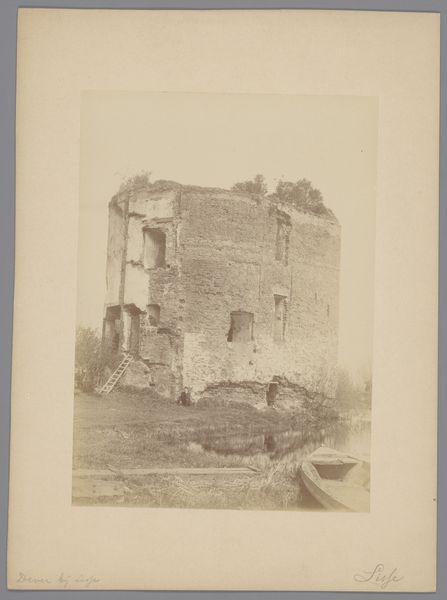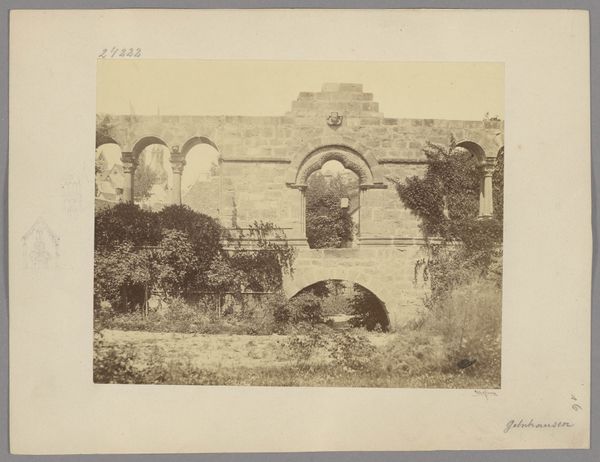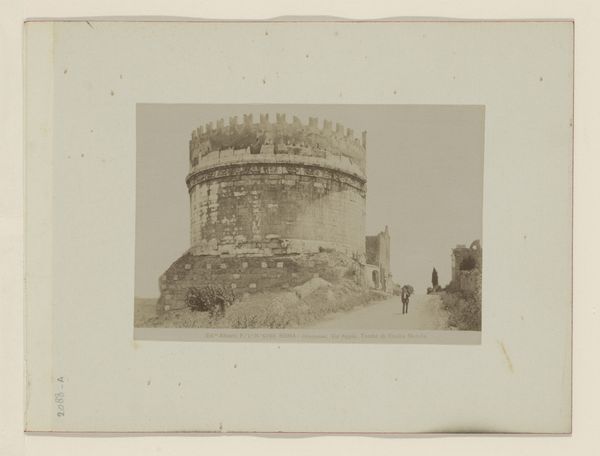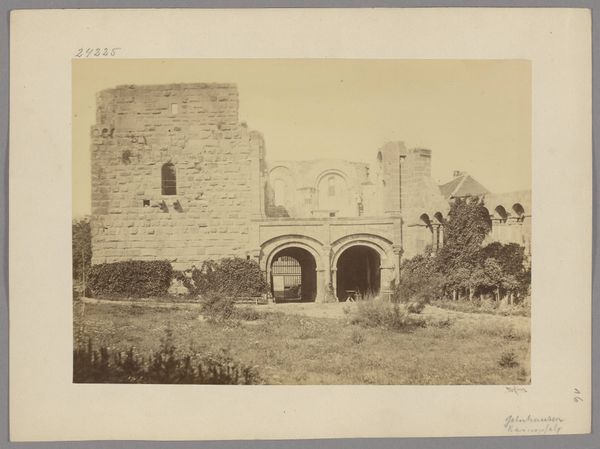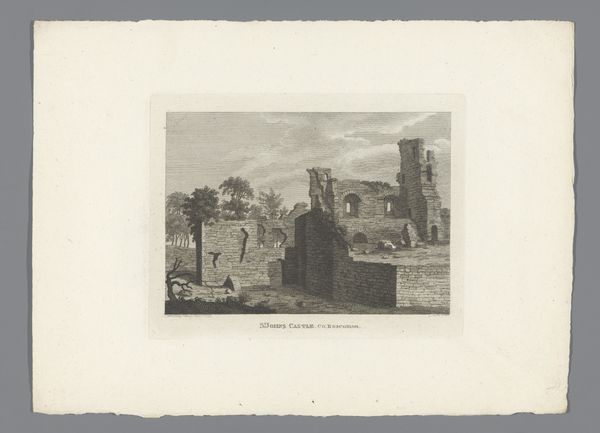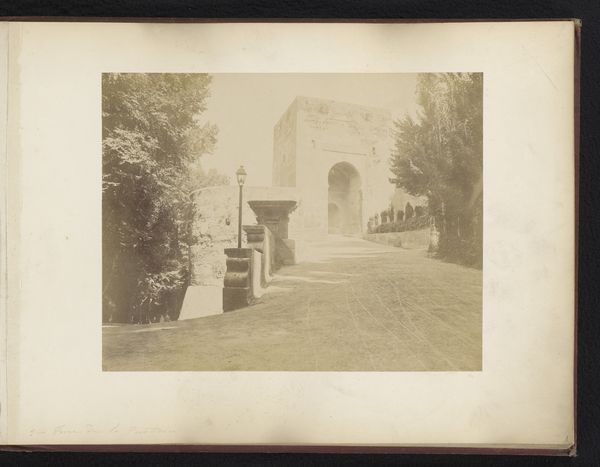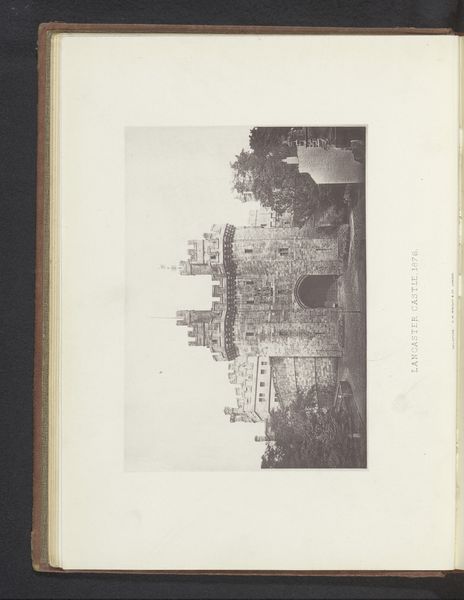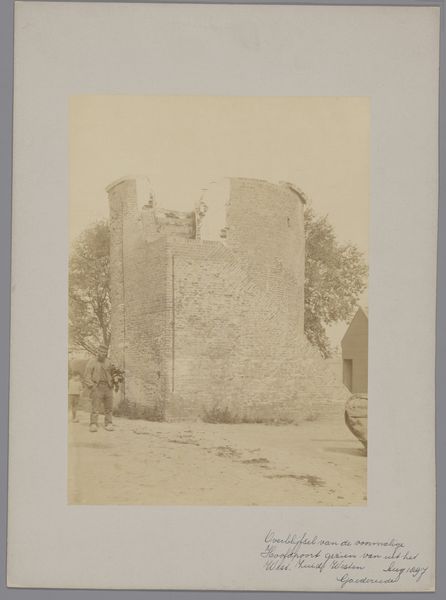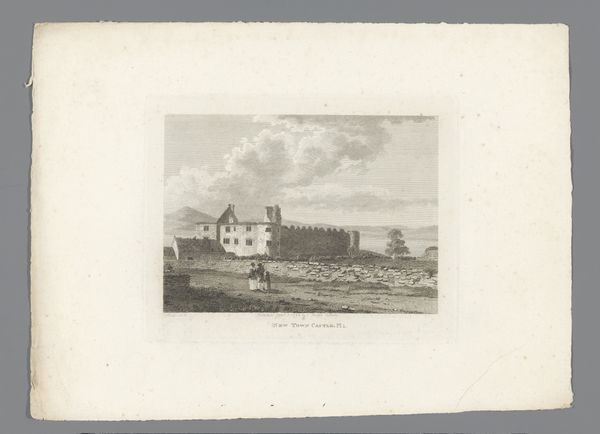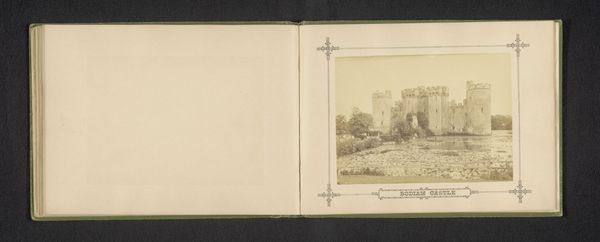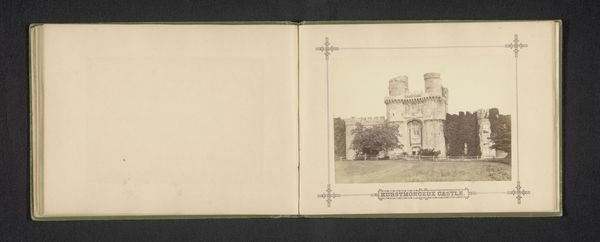
Dimensions: height 174 mm, width 235 mm
Copyright: Rijks Museum: Open Domain
Editor: Here we have an anonymous photograph, circa 1890-1910, depicting the ruins of the Berkelpoort in Zutphen. The faded sepia tones give it such a melancholy feel, almost like looking at a ghost of a building. What stands out to you when you see this image? Curator: Well, it's fascinating how these ruin photographs gained popularity during that period. The 'picturesque' decay really appealed to a sense of national identity, and pride of a bygone era, particularly the remnants of what was thought of as a romantic medieval past. Editor: So, these photographs weren't just documenting a historical site; they were participating in constructing a narrative around Dutch identity? Curator: Exactly! And note that this photograph was produced by Monumentenzorg, the Dutch agency for the preservation of monuments and heritage sites. Their role extended beyond preservation; they were also active in shaping the perception and appreciation of national heritage. The distribution of such images promoted an interest in, and awareness of the necessity for, cultural preservation. Editor: So, the choice to depict it in this state, these crumbling remains, really reinforces this narrative. Were they intentionally showcasing its fragility to encourage restoration efforts? Curator: Precisely. The photograph becomes a tool for a larger agenda – an argument for the importance of preserving the nation’s cultural history in the face of modernization. It frames a collective understanding and shared historical consciousness. Also consider its viewers: Who was intended to see this image? Why? How does that shape what's represented here? Editor: That's a very insightful point! Seeing it now, the image definitely moves beyond just being a photograph of a ruin, but one consciously used in larger historical dialogues. Curator: Yes, it becomes clear it served an active public purpose! Now, I'll be pondering how those original audiences understood and engaged with the scene. Editor: Absolutely, considering the photograph within the broader historical and cultural landscape reveals the power of art, in many forms, to shape collective identities and encourage political action. Thanks for providing new context!
Comments
No comments
Be the first to comment and join the conversation on the ultimate creative platform.
